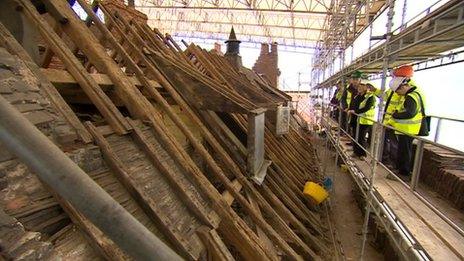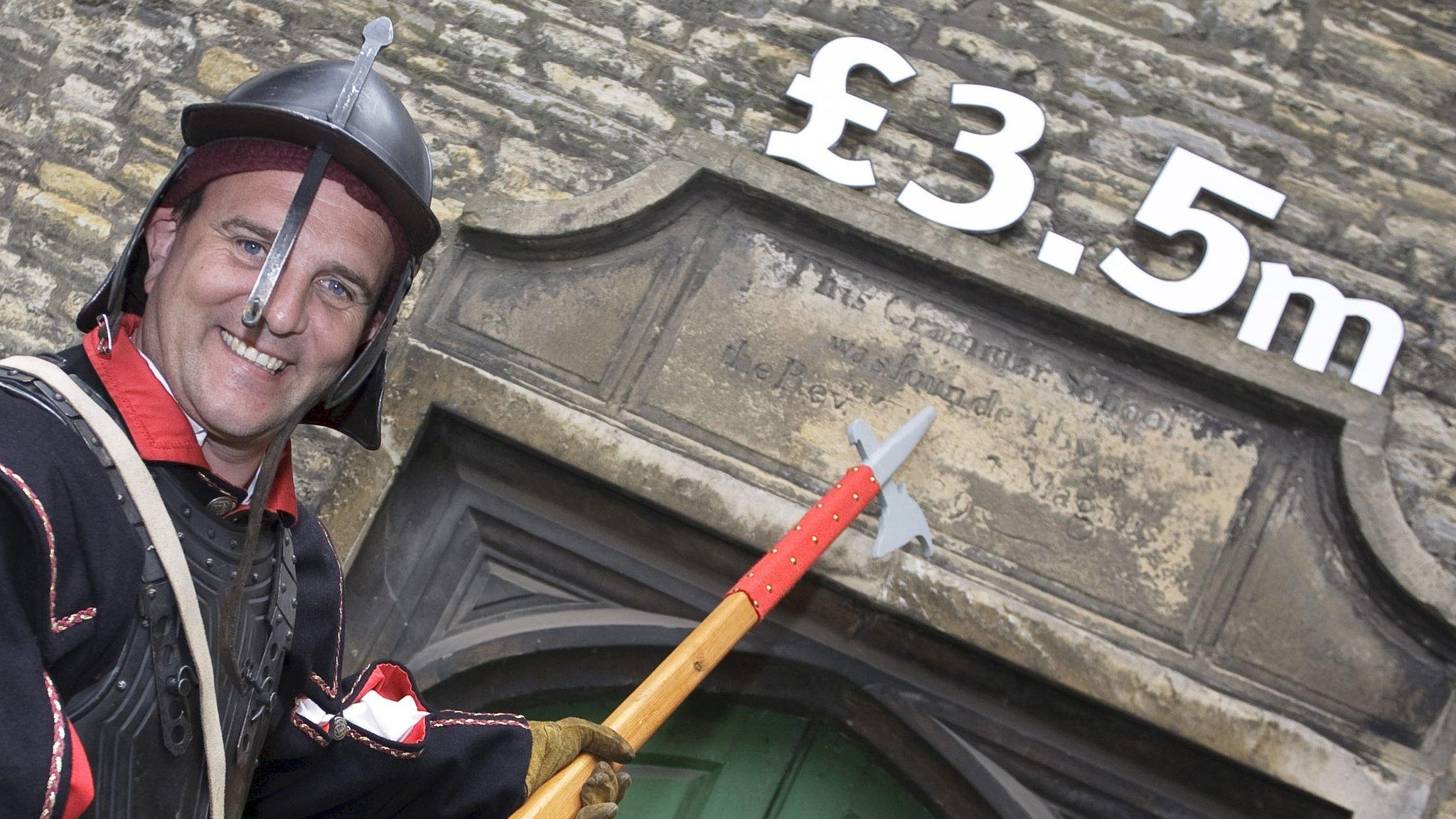Newark's Magnus museum work may reveal Civil War scars
- Published

The oak roof beams have been partly patched and repaired since the 16th Century
Work on a new National Civil War Centre is expected to uncover damage from the conflict it will commemorate.
The 500-year-old Magnus building in Newark, Nottinghamshire, is being converted into a museum as part of a £5.4m project.
It survived three sieges in the English Civil War, during which nearly a fifth of the town's buildings were destroyed.
Experts said they had begun to uncover original roof beams which may bear scorch marks and shell splinters.
The building's Royalist garrison finally surrendered in 1646.
Jane Roylance, a historic buildings architect said: "Some of [the roof structure] survived miraculously; other bits have failed spectacularly so we are at a point where we need to go through it and actually decide what repairs are needed."
It is hoped the Heritage Lottery-backed museum will open in spring next year, detailing the 17th Century conflict which deposed King Charles I.
As well as the Civil War displays, there will be galleries focussing on the local history of Nottinghamshire.
The Newark Torc, an Iron Age necklace found near the town, will also be displayed.
It will be the first time the item is displayed in the district after being loaned to the British Museum.
Officials estimate the centre could bring £1.3m into the local economy a year.
Michael Constantine, from the National Civil War Centre, said: "We've got some great interactive displays, arms and armour and all the weaponry from the Civil War and we've got some really gory stuff for the kids."
"Now we are taking a close look at the beams to see how they have survived 500 years of wear and tear and of course the Civil War.
"We are looking for bits of shrapnel and musket balls which might have gone in them."
- Published24 March 2013

- Published31 May 2012

- Published31 January 2012
- Published10 September 2010